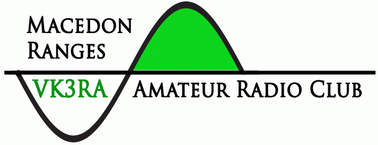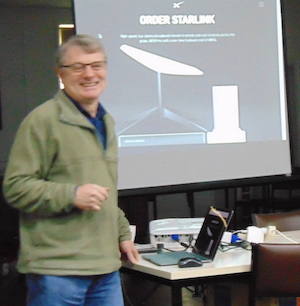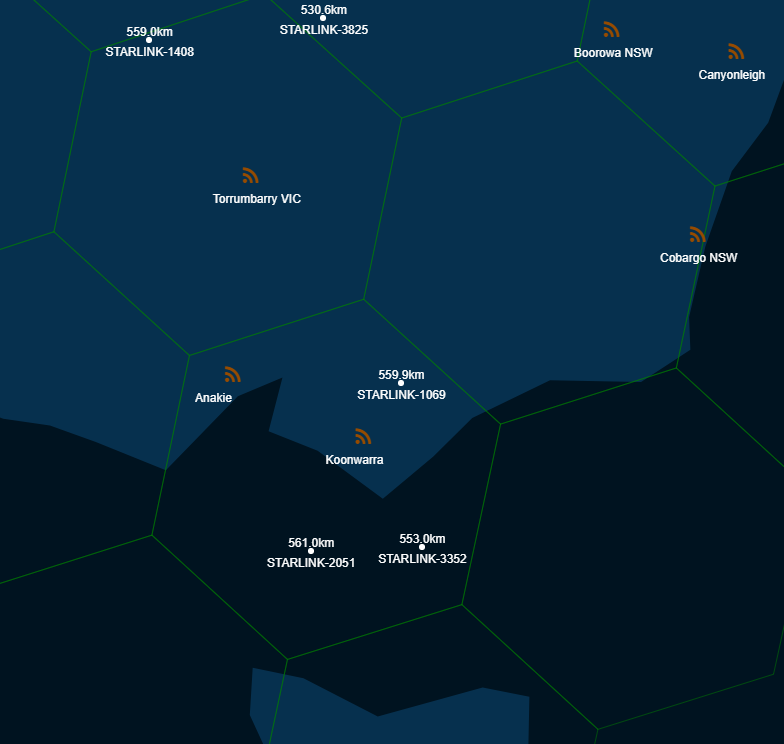Richard VK3JFK gave a practical demonstration of Starlink.
Richard said he is an early adopter of technology. He had NBN fibre to node, with rain for six months he had major disruptions. During lockdown this had a major impact on his daily Zoom meetings.
Richard bought along his version 1 (round dish) and placed it on the ground behind the RSL.
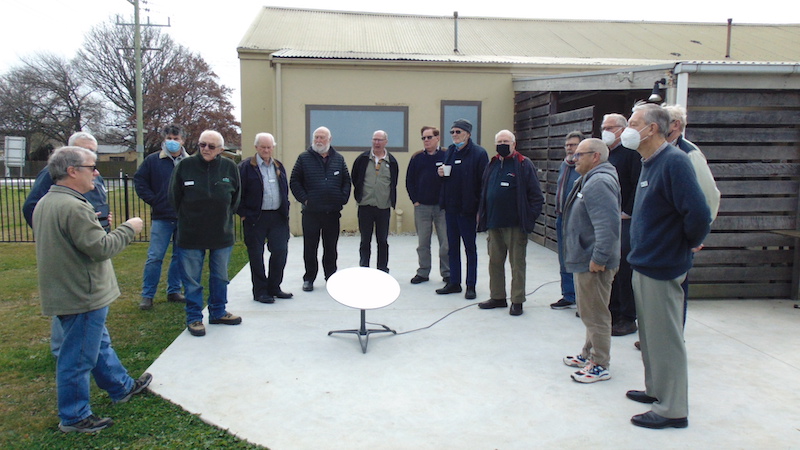
Members inspected the apparatus briefly, as the cold winds drove us back indoors.

Richard has wide experience with helping people set up Starlink. He told us what most already know from personal experience; the NBN in and around Woodend Macedon is very poor, regardless of connection type.
The NBN fixed wireless uses LTE technology, Skymaster is overloaded. The NBN service is often not suitable for work from home or HD streaming. The geosynchronous satellite systems have a typical latency of 600mS.
Richard’s connection at the meeting had 192 MBps download and 10 up.
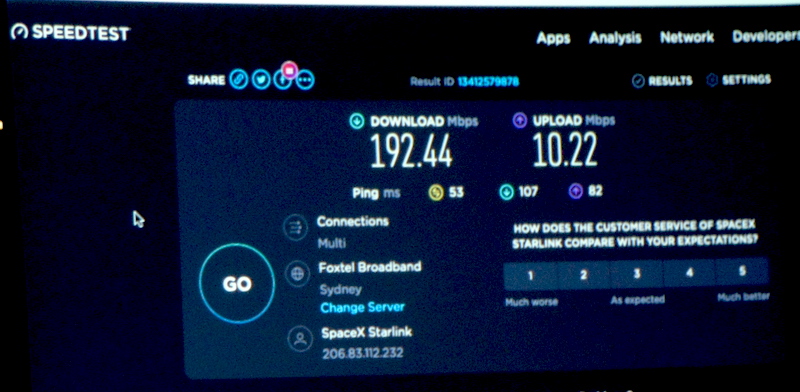
He showed on the Starlink access website, the Woodend “hexagon” is fully subscribed, as is Mansfield. Subscribers are placed on a waitlist for when there are more satellites or a local unsubscribes.
As Richard pays an extra $30 per month, on top of the $130 monthly access fee, he can travel into a waitlist area and gain access. However, Starlink aims for “customer experience” of low latency ~ 50ms and at least 50MBs down 15 MBs up. As a roaming service, his connection maybe limited giving priority to fixed point subscribers. Richard at his home averages 150 down, 12-15 up.
The roaming service can be used whilst mobile in his car, with the dish mounted on the roof and travelling at the legal speed limit for the road. The dish is a planar array, that faces south and must be able to “see” clear sky from east to west, above an elevation of 30 degrees.
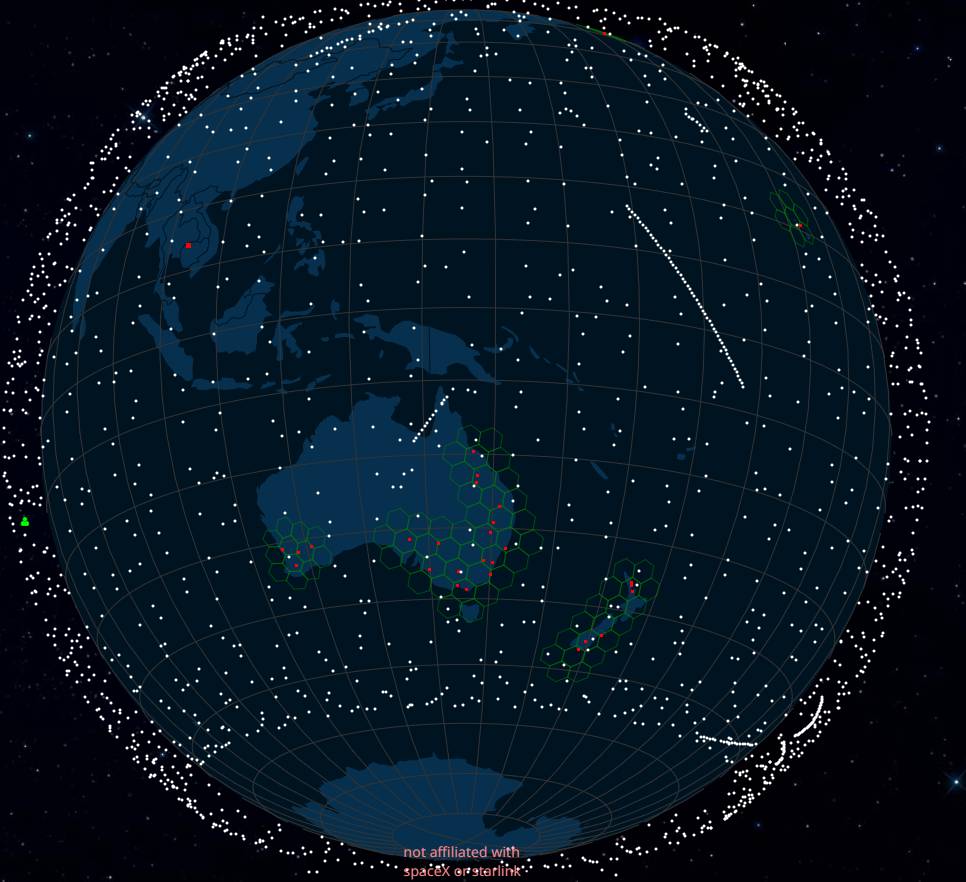
Starlink uses the 10-12GHz frequency range, meaning rain or moisture in trees can disrupt the signal.
Richard discussed that there are three satellite versions in orbit, 1, 1.5 and 2. Starlink does not have enough IpV4 addresses for each subscriber. It uses a Corporate Grade Network, meaning that all Australian subscribers are connected to the internet through Sydney 1 and 2.
The Starlink ground stations in each state use a private interconnection to feed into Sydney. With this CGN, subscribers cannot easily gain access to their own local LAN for monitoring security cameras etc. Some VPN tunnels are blocked by this configuration.
Starlink today currently provides a DHCP issued Carrier Grade NAT (CGNAT) non-routable IPv4 address in the 100.64.0.0/10 range while Starlink Business provides a publicly routable DHCP IPv4 address. Only a single IPv4 address is provided in both cases. As Starlink continues to expand and upgrade global internet service infrastructure and rollout new capabilities, some users may see different IP address behaviour (ex. publicly routable addresses, IPv6, non-CGNAT)
Version 1.5 and 2 satellites use laser communication between satellites to allow a low earth orbit satellite to connect to a ground station. Therefore, Starlink can be used by private ships/ cruise liners/ commercial vessels at sea.
Richard commented that Starlink gained a lot of publicity when Elon Musk donated version 2 systems to the Ukraine military.
Version 2 dishes are rectangular with an integrated power supply router and Wi-Fi access point. To use your own router, Wi-Fi or LAN, an ethernet dongle must be bought. Lindsay VK3GX has Starlink in Woodend and recommended adding the $60 dongle to the initial order. The Starlink router can be bypassed using the Starlink application. Orders are shipped from Singapore by DHL.
Richard told us that Starlink has total control over your system, with updates downloaded at 4am local time, uplink power can be reduced due to potential or actual local interference.
Richard kept his NBN connection (100 plan with average 75 down and 18-20 mS latency) for 6 months to allow comparison, especially with his daily Zoom meetings. Despite the slightly higher latency on Starlink, NBN was less reliable with dropouts. He experienced no dropouts with Starlink.
Richard told us that Elon Musk plans to have a mobile smartphone that uses the low earth orbit satellites available next year. This would eliminate dead spots in rural and southern remote areas of Australia. The plan is for future Tesla cars to have satellite communication built into the car.
Note that club annual subscriptions are now due. Emails have been sent out.
Meeting concluded at 12:10 pm.
Story and photos by Lindsay, VK3GX
